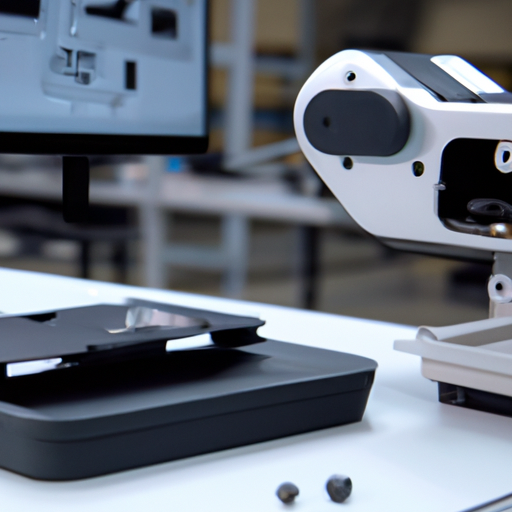5 Ways to Optimize your IT Department
- michael
- May 10, 2023
The IT department plays a crucial role in any organization, as it is responsible for managing and maintaining the digital infrastructure that supports business operations. This includes hardware, software, network administration, data management, and security. As technology continues to evolve at a rapid pace, it is imperative for organizations to optimize their IT departments to stay ahead of the curve and to maximize efficiency. In this essay, we will discuss five ways to optimize your IT department and provide a more in-depth analysis of each strategy
1. Investing in Training and Skill Development
One of the most important ways to optimize your IT department is by investing in continuous training and skill development. As technology changes rapidly, IT professionals must stay up-to-date with the latest advancements to ensure they can effectively support the organization. Offering regular training programs, workshops, and certification courses will help your IT staff stay ahead in the field, ensuring they have the necessary skills to tackle any challenge. Additionally, encouraging employees to attend industry conferences and events can provide opportunities for learning and networking, which can lead to improved performance and innovation in the department.
To further enhance the benefits of training and skill development, organizations can consider implementing mentorship programs and pairing less experienced IT staff with
seasoned professionals. This approach can help accelerate learning and knowledge transfer while fostering a culture of continuous improvement. By investing in the development of their IT workforce, organizations not only optimize their department’s performance but also increase employee satisfaction, engagement, and retention.
2. Implementing Automation and AI Solutions
Automation and AI solutions can help improve efficiency in the IT department by streamlining routine tasks and enabling staff to focus on more strategic initiatives. Implementing automated monitoring tools for network and system health can help identify potential issues before they escalate, while AI-driven analytics can help optimize infrastructure and detect anomalies. By automating repetitive tasks such as patch management, backups, and software deployment, your IT team can save time and resources, enabling them to concentrate on higher-value tasks that require their expertise.
Furthermore, organizations can leverage machine learning and AI technologies to enhance their cyber security measures, such as detecting and preventing potential threats, automating incident response, and identifying vulnerabilities in the IT infrastructure. By incorporating these advanced technologies into their IT operations, organizations can optimize their department’s performance and ensure a more secure and stable digital environment.
3. Adopting a Proactive Approach to IT Management
Optimizing your IT department involves adopting a proactive approach to IT management, focusing on anticipating and preventing issues rather than simply reacting to them. This includes regularly reviewing and updating IT policies and procedures, conducting security audits, and performing routine maintenance on hardware and software systems. A proactive approach can help prevent downtime, data breaches, and other costly issues that can impact an organization’s overall productivity and reputation.
To further promote a proactive IT management culture, organizations can establish dedicated teams or roles focused on long-term planning and strategy. These teams can work
on anticipating future technology trends and evaluating potential risks, ensuring that the organization is prepared for any challenges that may arise. By investing in proactive IT management, organizations can optimize their department’s performance and minimize the likelihood of unexpected disruptions.
4. Encouraging Collaboration and Cross-Functional Teams
Encouraging collaboration and the formation of cross-functional teams within the IT department can help optimize operations. Cross-functional teams that include members from different areas of IT, such as network administration, software development, and data management, can collaborate more effectively to address complex problems and implement comprehensive solutions. Promoting a collaborative culture also encourages knowledge sharing and innovation, which can lead to improved efficiency and performance in the IT department.
One way to foster a collaborative environment is by implementing agile methodologies, which emphasize collaboration, communication, and iterative progress. By adopting these practices, IT departments can break down silos, improve communication, and enhance their ability to adapt to changing requirements and priorities. Additionally, organizations can use collaboration tools and platforms, such as project management software, team chat applications, and shared document repositories, to facilitate seamless communication and information sharing among IT staff
5. Regularly Evaluating and Updating IT Infrastructure
Regularly evaluating and updating your IT infrastructure is essential for optimizing your department. This includes conducting periodic assessments of hardware, software, and
network systems to identify potential bottlenecks or inefficiencies. By staying current with the latest technological advancements and trends, organizations can make informed decisions about upgrading or replacing outdated systems. This not only ensures that your IT infrastructure remains up-to-date and secure but also helps to optimize performance and reduce costs in the long run.
Organizations should consider adopting a lifecycle management approach to their IT assets, which involves tracking and monitoring the performance, usage, and maintenance of hardware and software components throughout their lifespan. This approach allows organizations to make data-driven decisions about when to retire or replace assets, ensuring that IT infrastructure remains efficient and cost-effective.
Moreover, embracing cloud-based solutions and virtualization technologies can help organizations optimize their IT infrastructure by reducing hardware costs, increasing scalability, and improving flexibility. By migrating services and applications to the cloud, organizations can offload the burden of managing and maintaining physical servers, enabling IT staff to focus on more strategic initiatives.
Conclusion
In conclusion, optimizing your IT department is vital to ensuring the success and efficiency of an organization in today’s rapidly evolving technological landscape. By investing in training and skill development, implementing automation and AI solutions, adopting a proactive approach to IT management, encouraging collaboration and cross-functional teams, and regularly evaluating and updating IT infrastructure, organizations can maximize the potential of their IT department and stay ahead of the competition. Implementing these strategies can lead to improved performance, cost savings, and increased innovation within your IT department, ultimately benefiting the entire organization. Through a commitment to continuous improvement and adaptation, organizations can ensure that their IT departments remain agile, efficient, and effective in supporting the organization’s goals and objectives.

Robotic Process Automation
Blog Categories
Feel free to get in touch with our experts.
Other articles
Emerging Chatbot Trends: AI Technology, NLP, Sentiment Analysis & Multi-Language Support for Customer Support
Enhancing healthcare through intelligent conversation. Enhancing Mental Health Support and...
Read MoreHow to Get Started with AI and RPA
Introduction to AI and RPA: A Beginner’s Guide Artificial Intelligence...
Read MoreAI and RPA for Customer Service
The Impact of AI and RPA on Customer Service: Enhancing...
Read More


